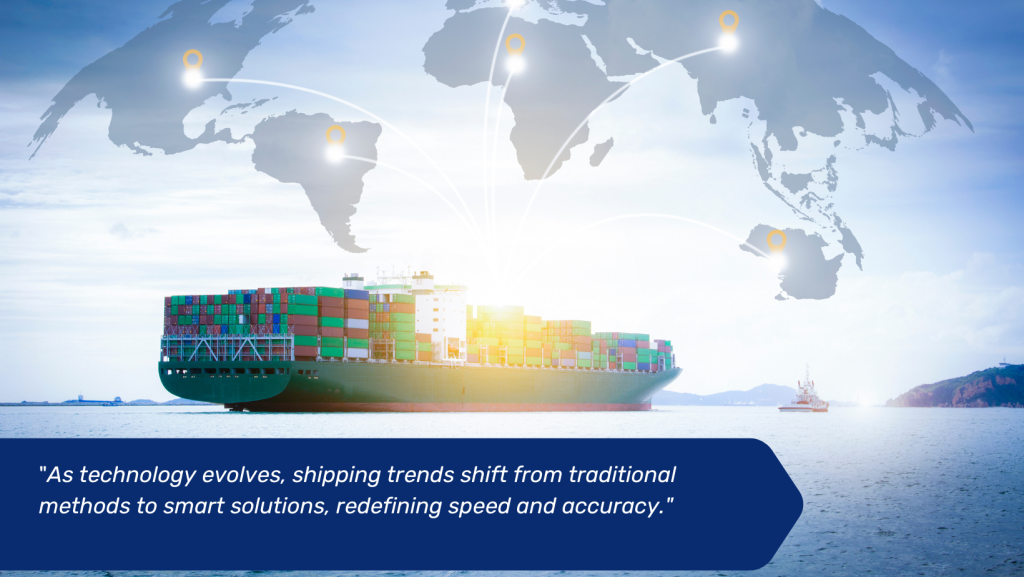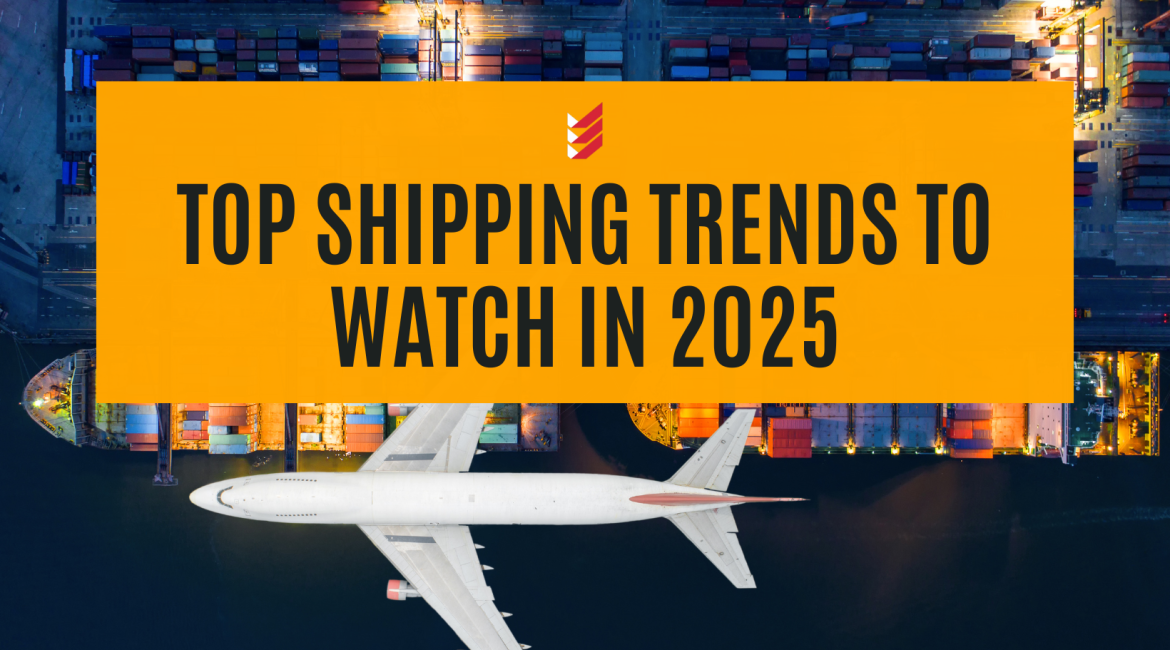Preparing for the Future

The shipping industry is Changing rapidly, and staying ahead of emerging trends is crucial for shippers looking to remain competitive. As we move into 2025, improvements in technology, shifting global trade dynamics, and a growing emphasis on environmental are shaping the future of logistics. In this blog, we highlight the top shipping trends to watch in 2025 that will impact the industry and offer opportunities for shippers to optimize their operations.
1. Increased Adoption of AI and Machine Learning
Artificial Intelligence (AI) and machine learning are transforming how logistics companies manage shipments. Consequently, by 2025, expect broader use of AI-driven tools for demand forecasting, route optimization, and real-time tracking. These advancements will allow shippers to make more accurate predictions, cut costs, and enhance delivery efficiency. Moreover, AI-powered automation will not only streamline inventory management but also enhance warehouse operations. Consequently, these improvements will drive greater efficiency and accuracy.
2. Growing Emphasis on Sustainability
Sustainability remains a top priority for businesses and consumers alike. In 2025, we anticipate an even stronger focus on eco-friendly shipping practices. As more companies adopt green shipping strategies, such as using electric or hybrid vehicles, optimizing packaging to reduce waste, and implementing carbon offset programs, they will not only reduce their environmental footprint but also attract environmentally conscious customers. Consequently, shippers that prioritize sustainability will gain favor with eco-aware consumers and enhance their market position.
3. Expansion of Electric and Autonomous Vehicles
The rise of electric vehicles (EVs) and autonomous delivery systems is set to revolutionize the shipping industry in 2025. As EV technology becomes more advanced and affordable, more logistics companies will integrate electric trucks and vans into their fleets. Additionally, autonomous vehicles and drones are expected to play a bigger role in last-mile delivery, improving efficiency and reducing labor costs.
4. Blockchain for Enhanced Supply Chain Transparency
Blockchain technology is gaining traction as a way to increase transparency and security in supply chains. By 2025, more shipping companies will adopt blockchain to create immutable records of transactions, improving accountability and reducing the risk of fraud. This technology will also enhance trust between shippers and logistics partners by providing real-time visibility into the status of shipments.
5. Growth in E-commerce and Demand for Faster Deliveries
The e-commerce boom shows no signs of slowing down in 2025. Consequently, the demand for faster and more reliable deliveries is increasing. Therefore, shippers must focus on optimizing their last-mile delivery strategies to meet consumer expectations for speed and convenience. Moreover, companies that offer same-day or next-day shipping will not only meet these demands but also gain a competitive edge in the market.
6. Increased Use of Multi-Modal and Intermodal Shipping
As global trade continues to grow, multi-modal and intermodal shipping will become even more important in 2025. Shippers will increasingly rely on combinations of air, rail, ocean, and road transport to optimize costs and improve delivery times. The ability to seamlessly switch between different modes of transportation will allow companies to navigate disruptions more effectively and ensure that goods reach their destination on time.
7. Advances in Smart Warehousing and Automation
Smart warehousing technologies will continue to evolve in 2025, driven by automation, robotics, and the Internet of Things (IoT). These advancements will help shippers improve inventory management, reduce labor costs, and streamline warehouse operations. Automation technologies, such as robotic picking systems and automated storage, will, therefore, enable faster order fulfillment. Consequently, this will lead to improved accuracy in shipments.
8. Resilience and Risk Management in Supply Chains
The disruptions caused by global events in recent years have highlighted the importance of building resilient supply chains. In 2025, shippers will place a greater emphasis on risk management strategies, including diversifying their supplier base and investing in real-time tracking and analytics tools. These measures will help businesses respond more effectively to disruptions, minimize delays, and reduce costs.
9. Cross-Border E-commerce Growth
The expansion of cross-border e-commerce will continue in 2025, opening new markets for businesses and creating new shipping challenges. Shippers will need to navigate complex international regulations, customs procedures, and local delivery networks. Businesses that can streamline their cross-border logistics will be well-positioned to tap into the growing global e-commerce market.
10. Rising Importance of Data-Driven Decision Making
Data-driven decision-making will become increasingly important for shippers in 2025. Logistics companies will rely more on data analytics to optimize routes, forecast demand, manage inventory, and enhance customer service. Real-time data collection and analysis will allow businesses to make more informed decisions and stay competitive in a rapidly changing market.

Shipping Trends
As 2025 approaches, the shipping industry will continue to undergo significant changes. Shippers who embrace emerging technologies, prioritize sustainability, and focus on supply chain resilience will be well-positioned to succeed in this evolving landscape. By staying informed about these trends, businesses can optimize their logistics operations, improve efficiency, and meet the growing demands of the modern market.
